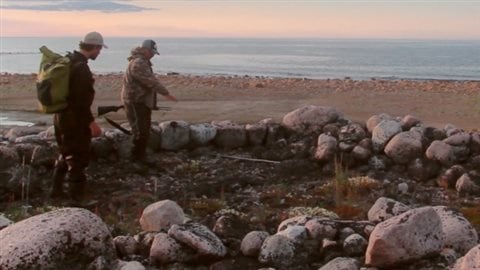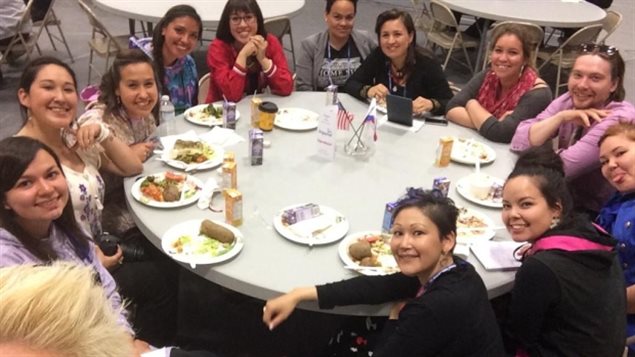A new study shows that all Inuit- Iñupiaq speakers in the Arctic share a commen genetic background. It was published on April 29th in the American Journal of Physical Anthropology. The study was initiated by elders in Barrow, from Alaska’s North Slope area who wanted to learn more about their history.
The report by American researchers indicates that about 4,500 years before present (YPB) human migration from what was known as Beringia. present day Siberia and Alaska and a land bridge connecting them, spread slowly eastward in the Arctic. From Siberia and the Alaskan North slope these “paleo-eskimos” spread eastward to Greenland over the next 3,000 years.

“This is the first evidence that genetically ties all of the Iñupiat and Inuit populations from Alaska, Canada and Greenland back to the Alaskan North Slope,” said M. Geoffrey Hayes in a press release. He is an assistant professor of endocrinology, and of anthropology at Chicago’s Northwestern University.
Some 151 saliva samples were tested and found to contain genetic markers indicating a common ancestor previously found in remains of paleo and neo-eskimos and with markers in present Inuit groups all across the Arctic from the Aleutian Islands, Alaska, Canada, and Greenland.
The study shows that from this North Slope area there were two major migrations as the mammal hunters spread eastward. The first were the Paleo-eskimo, and much later, about 800 YPB, another more technically sophisticated and distinct group of whale hunters called Neo-eskimo Thule. This group spread more quickly eastward through the Paleo-eskimo areas and generally replaced them throughout the Arctic and which have shown the genetic heritage of all the peoples across the eastern Arctic
The report says earlier, less sophisticated DNA testing showed only that Alaskan Iñupiat, Canadian and Greendlandic Inuit, and Siberian Eskimo as we know them today, were distinctive from southern North American aboriginal populations.
However the study did reveal the presence of a genetic marker for aboriginal groups much farther south. Researchers say this may be the ret of a far more ancient marker from the earliest groups to enter the Americas, or because of more recent marriages of Athabaskan and Inupiat families. Further study in that and other areas will come.







For reasons beyond our control, and for an undetermined period of time, our comment section is now closed. However, our social networks remain open to your contributions.